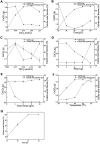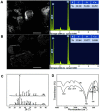Improvement of Biomineralization of Sporosarcina pasteurii as Biocementing Material for Concrete Repair by Atmospheric and Room Temperature Plasma Mutagenesis and Response Surface Methodology
- PMID: 34319256
- PMCID: PMC9705896
- DOI: 10.4014/jmb.2104.04019
Improvement of Biomineralization of Sporosarcina pasteurii as Biocementing Material for Concrete Repair by Atmospheric and Room Temperature Plasma Mutagenesis and Response Surface Methodology
Abstract
Microbially induced calcium carbonate precipitation (MICP) has recently become an intelligent and environmentally friendly method for repairing cracks in concrete. To improve on this ability of microbial materials concrete repair, we applied random mutagenesis and optimization of mineralization conditions to improve the quantity and crystal form of microbially precipitated calcium carbonate. Sporosarcina pasteurii ATCC 11859 was used as the starting strain to obtain the mutant with high urease activity by atmospheric and room temperature plasma (ARTP) mutagenesis. Next, we investigated the optimal biomineralization conditions and precipitation crystal form using Plackett-Burman experimental design and response surface methodology (RSM). Biomineralization with 0.73 mol/l calcium chloride, 45 g/l urea, reaction temperature of 45°C, and reaction time of 22 h, significantly increased the amount of precipitated calcium carbonate, which was deposited in the form of calcite crystals. Finally, the repair of concrete using the optimized biomineralization process was evaluated. A comparison of water absorption and adhesion of concrete specimens before and after repairs showed that concrete cracks and surface defects could be efficiently repaired. This study provides a new method to engineer biocementing material for concrete repair.
Keywords: Biomineralization; calcite; calcium carbonate; concrete repair; optimization.
Conflict of interest statement
The authors have no financial conflicts of interest to declare.
Figures






References
-
- Muynck WD, Cox K, Belie ND, Verstraete W. Bacterial carbonate precipitation as an alternative surface treatment for concrete. Constr. Build. Mater. 2008;22:875–885. doi: 10.1016/j.conbuildmat.2006.12.011. - DOI
-
- Pacheco-Torgala F, Labrincha JA. Biotech cementitious materials: Some aspects of an innovative approach for concrete with enhanced durability. Constr. Build. Mater. 2013;40:1136–1141. doi: 10.1016/j.conbuildmat.2012.09.080. - DOI
-
- Tait K, Sayer JA, Gharieb MM, Gadd GM. Fungal production of calcium oxalate in leaf litter microcosms. Soil Biol. Biochem. 1999;31:1189–1192. doi: 10.1016/S0038-0717(99)00008-5. - DOI
MeSH terms
Substances
Supplementary concepts
LinkOut - more resources
Full Text Sources
Molecular Biology Databases

